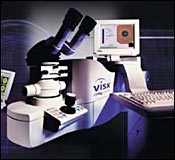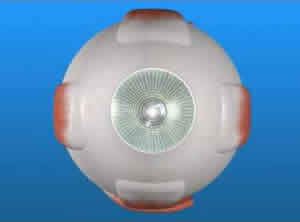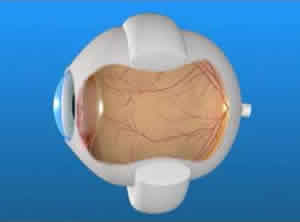The LASIK Difference.
LASIK, Laser in-Situ Karatomileusis, is performed under a protective layer of corneal tissue. As a result, there is less surface area to heal, less risk of scarring, less risk of corneal haze, less post-operative discomfort, and vision returns more rapidly, often within a day or so.
LASIK Procedure Explained.
After the eye has been completely numbed using “eye drop” anesthesia, an eyelid holder will be placed between the eyelids to prevent blinking. A procedure known as the Intralase Method (learn more) then makes a protective flap in the cornea. The Intralase Method (blade free) replaces the microkeratome (blade) used to create the corneal flap prior to the actually LASIK surgery. A portion of the flap remains attached to the eye (as a hinge) while the remainder is gently lifted up and back exposing the inner cornea. During this process, a person may feel a little pressure, but generally no discomfort. The patient is asked to look directly at a target light while the beam laser reshapes the cornea, usually in less than a minute. Then, the protective flap is folded back in place where it bonds securely without the need for stitches. After LASIK, some patients report a slight discomfort that usually goes away in twenty-four hours.
Make Expectations Realistic.
It’s important to base your decision on facts, not misconceptions. While LASIK’s goals are to reduce your dependence on corrective lenses, they do not always create 20/20 vision. In fact, presbyopia, or aging of the eye, normally occurs around age 40, and may require the use of reading glasses. Some people over 40 who have their distance vision improved with LASIK may find they need reading glasses after the procedure.
Are you a Lasik candidate?
If you’re over 18, have healthy corneas, no significant change in your vision in the last year and no chronic eye disease or autoimmune disease, you could be a candidate. Laser vision correction is approved for myopia up to -11D, astigmatism up to -3D and hyperopia up to +3D, mixed astigmatism up to -5D. A thorough screening exam is available to determine if you are a good candidate and to assist you in making an informed decision about refractive surgery. Pregnant and nursing women should not consider the procedure.
The Excimer Laser.

For many years, the only way to treat nearsightedness, farsightedness and astigmatism was for doctors to make incisions in the cornea. In the early 1980s, researchers discovered a computer assisted laser, the Excimer laser, which could remove tissue with up to a 0.25 micron of accuracy. Now after decades of use, the highly advanced Excimer laser allows a tremendous amount of precision, control and safety to surgical vision correction. The Excimer laser is unique in that it emits a cool or
non-thermal light beam. This makes it ideal for corneal surgery because it eliminates the possibility of thermal
damage to surrounding tissue.
The CustomVue Option: Individualized Laser Vision Correction.
Now, instead of relying on standard measurements to correct vision, VISX CustomVue can measure and address the special needs of each individual’s whole visual system. WaveScan technology produces a detailed map of your eye–much like a fingerprint, no two are alike. With this incredibly detailed information, doctors can truly tailor vision correction especially for your eyes only.
The unique correction information is transferred from the WaveScan to the VISX Star S4 Excimer laser, guiding the laser throughout the procedure. The 3-D ACTIVETRAK eye tracker follows the eye’s tiniest movements. It instantly and automatically repositions the laser to keep the laser beam focused where the doctor wants it, so the patient can relax in complete confidence.
The Difference Is Like Day–And Night!
 In the past, laser vision correction patients occasionally complained about their night vision. Naturally, people who have never had LASIK procedures also have these problems while wearing glasses or contact lenses.
In the past, laser vision correction patients occasionally complained about their night vision. Naturally, people who have never had LASIK procedures also have these problems while wearing glasses or contact lenses.
In a recent FDA clinical study, however, more people were satisfied or very satisfied with their night vision after their LASIK procedure as compared to their prior level of satisfaction using glasses or contact lenses.
For more information on LASIK, click here.





